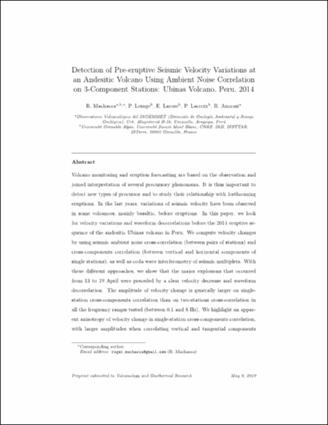Please use this identifier to cite or link to this item:
https://hdl.handle.net/20.500.12544/2314Files in This Item:
| File | Description | Size | Format | |
|---|---|---|---|---|
| Machaca-Detection_of_pre-eruptive_seismic_velocity.pdf | Artículo preprint | 4.81 MB | Adobe PDF | View/Open |
Items in DSpace are protected by copyright, with all rights reserved, unless otherwise indicated.











